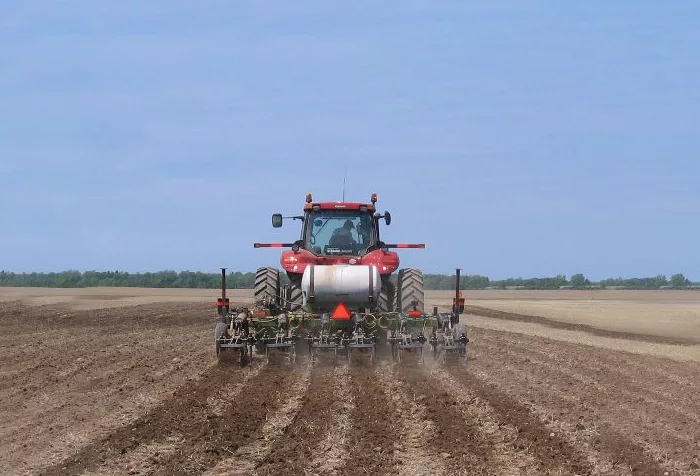Strip-tilling a variety of crops, including cabbage, Joe Brightly is evolving fertilization practices and equipment on his New York operation.
When the Brightly family began strip-tilling in 2010 near Hamlin, N.Y., they were among the early adopters of the practice in their area. But they’ve noticed that many farmers who may have raised an eyebrow initially have also jumped on board.
“It’s a highly adapted way of farming for our area,” says Joe Brightly, who farms with his father, Dean and brother, Paul. “About 5 years ago, there were some farmers in the southern and western parts of New York strip-tilling, but not so many in our part of the state near Lake Ontario.”
Since making the move from conventional tillage to strip-till, Brightly says their farm’s soil health and structure have improved, along with yields.
“I can’t say it’s strictly because of strip-till, but our corn yields have increased by about 35 bushels per acre, compared to 5 years ago,” he says. “Soil health and structure are really starting to change as well. It’s becoming a bit darker and mellow. Last year I thought I saw a big difference, but this year I’ve see the most difference out of any year, and that is saying a lot.”
Strip-Till Variety
The Brightly farm grows a large variety of crops, including about 850 acres of corn, 500 acres of soybeans, 300-400 acres of wheat, 250-300 acres of cabbage, 200 acres of winter squash and about 400 acres of other mixed vegetables like sweet corn, peas and snap beans.

One of the more unique strip-tilled crops to manage is cabbage, which Brightly first began doing in 2012. He’s been able to refine his early experiments and is finding success with a cross-tillage method.
“We had a lot of early issues with weeds, but now we do a hybrid technique that’s half vertical tillage, half strip-till,” says Brightly.
A few weeks prior to planting, they run a 34-foot Case IH 335 vertical-tillage tool over the field to eliminate troublesome weeds. Then they build strips and apply a pre-emergent herbicide that must be incorporated into the soil, followed by another vertical tillage pass ahead of planting.
“If I’m going down the road, it actually almost looks like a plowed or fully worked field,” Brightly says. “But in reality, it’s only tilled an inch down across the field except in the strips where it’s 16 inches down. We do it that way to preserve soil structure and combat weeds.”
Brightly says he found that vertical tillage 1 inch deep is more effective in combating pre-season weed issues, rather than applying more herbicides that weren’t working.
One advantage of strip-tilling cabbage is moisture retention. The soil stays firmer on the top and wetter down below, and cabbage really needs a lot of moisture especially when it’s really hot in the summertime, Brightly says.
Equipped for Success
For most of his crops, Brightly builds strips 10 inches deep with the same 12-row Kuhn Krause Gladiator rig, set to 30-inch spacings, that he’s used since 2012. But for cabbage he finds that a depth of 16 inches works better and uses a 6-row Unverferth 120 strip-till rig.

“We have it set up to go deeper and have the rows moved so they aren’t exactly on 30-inch centers,” says Brightly. “Overall, it’s 15 feet wide, but we have the row units set a little bit wider between rows 2-3 and 4-5 to make room for the tractor tires.”
Building deeper strips for cabbage is necessary to help compensate for more rigorous spraying and harvest needs, which can compact the soil.
“Cabbage is pretty hard on the ground when you harvest it,” says Brightly. “We harvest our fresh-market cabbage by hand, loading it into 2-ton boxes on the backs of tractors. Plus, we have to spray it once every 10 days, so there is some significant compaction in the spray rows.”
Perfecting this method has taken some trial and error, made even more challenging by the fact that there is little information available to compare his results to.
“I’ve only come across one other farmer strip-tilling cabbage, and he was still just trying to figure it out too,” says Brightly.
Increasing Fertilizer Accuracy
Since adopting strip-till, Brightly hasn’t modified their farm’s fertility program much, except for a slight increase in application rates.
But he feels that this can be attributed more to his rising expectations.







